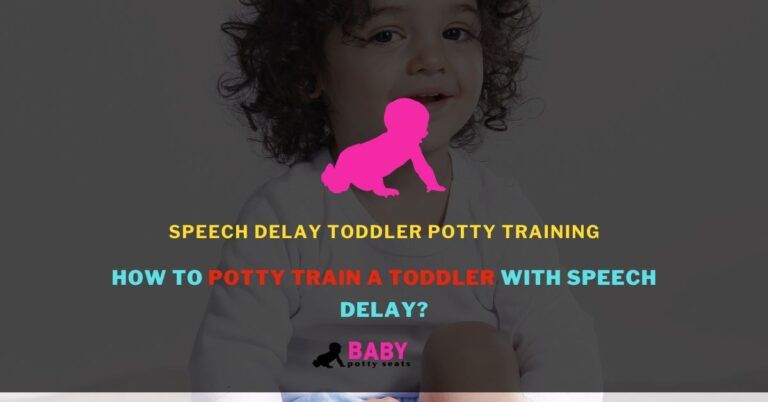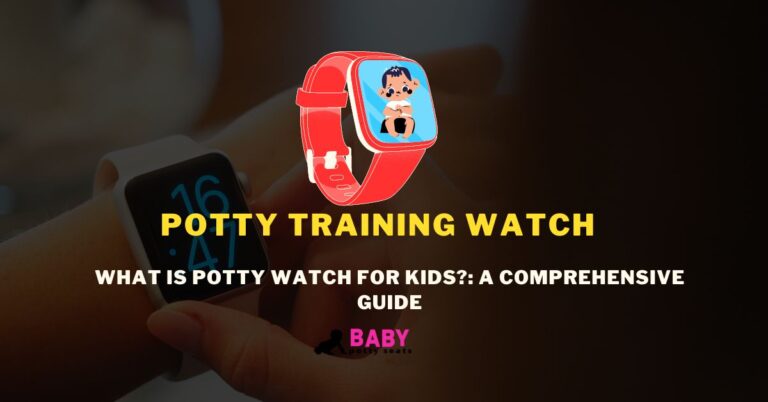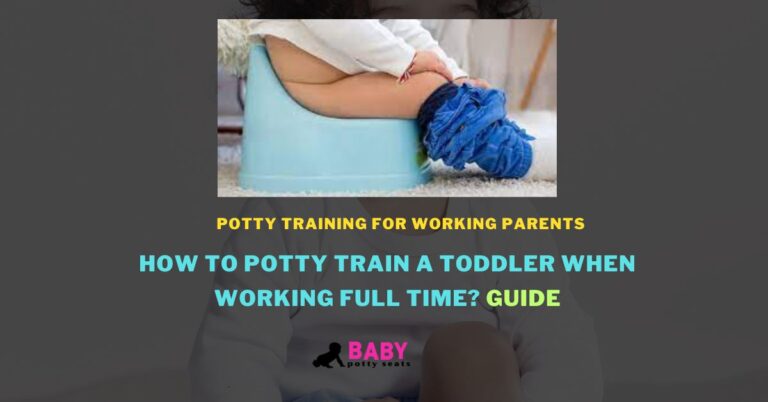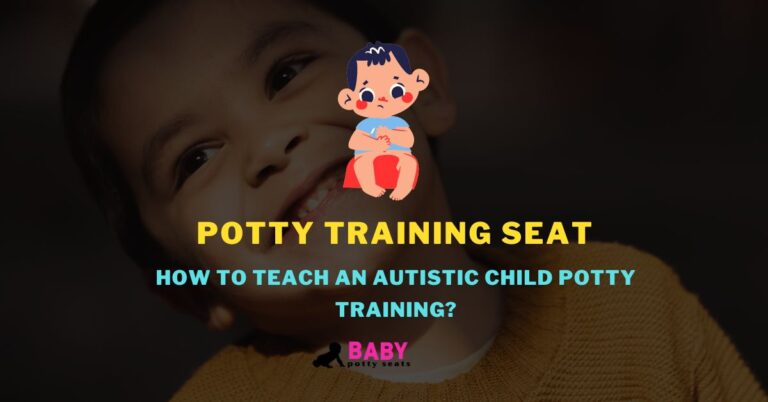If you have a little girl and you are curious about potty training, here we help you with a comprehensive guide to potty training a girl. Potty training is seen to be a very headache and challenging process, but with the right time and strategy, it will become an exciting and joyful journey.
Every child has a unique personality and learning, so one method or strategy does not work for all children. But with some tips and advice, it helps you to ditch the diaper.
Here, we utilized a brief guide for potty training, which will retire your child for potty training.
When to Start Potty training a girl? A Brief Guide
Research reveals that most show signs of Readiness for potty training at nearly 18 to 24 months. You can start before this age, but this age is an excellent time to start potty training.
Every child has a unique personality and is different. Don’t worry if your child(baby girl) does not show any signs or shows signs early.
Potty training requires several skills in your children; some children take less or longer time to develop those skills. Below are skills that a child needs to begin potty training;
Neuromuscular: They need to be able to control their bladder and bowel for at least two hours.
Communication: They need to be able to tell you when about Potty to go.
Motor Skills: They need to pull up and down their pants.
Always Ready: They must always be motivated and willing for potty training.

Children need to develop all skills for successful potty training, but some children develop one or more skills before others. Considering these skills, you will know when to start potty training.
Besides these, let her watch you and the other children use the toilet. Make it more interesting by talking about toilet training; when she develops those skills, she will be more excited and motivated about toilet training.
How long does it take to potty train a girl?
Girls can take a very different amount of time to potty train because every child is unique then others and develops at a different rate. Potty training typically starts between 18 and 24 months, though some kids may begin earlier or later. Several months are usually needed for the process to be consistently successful.
Several factors can influence the timeline of potty training:
1. Readiness Signs:
The child must be prepared. Keep an eye out for indicators like a desire to use the Potty, the ability to follow basic instructions, stay dry for extended periods, and communication about the need to go.
2. Consistency:
Consistency in the Approach to potty training is essential. Successful training can be facilitated by following a schedule, employing positive reinforcement, and offering encouragement.
3. Parental Involvement:
Parental involvement and support play a significant role. Patience, encouragement, and praise for successful attempts can boost a child’s confidence.
4. Communication Skills:
The child’s communication proficiency may impact the procedure. Training can be aided by communicating the need to use the Potty or comprehending parental instructions.
5. Child’s Personality:
Each child has a unique personality; some may be more independent or cooperative during the potty training process than others.
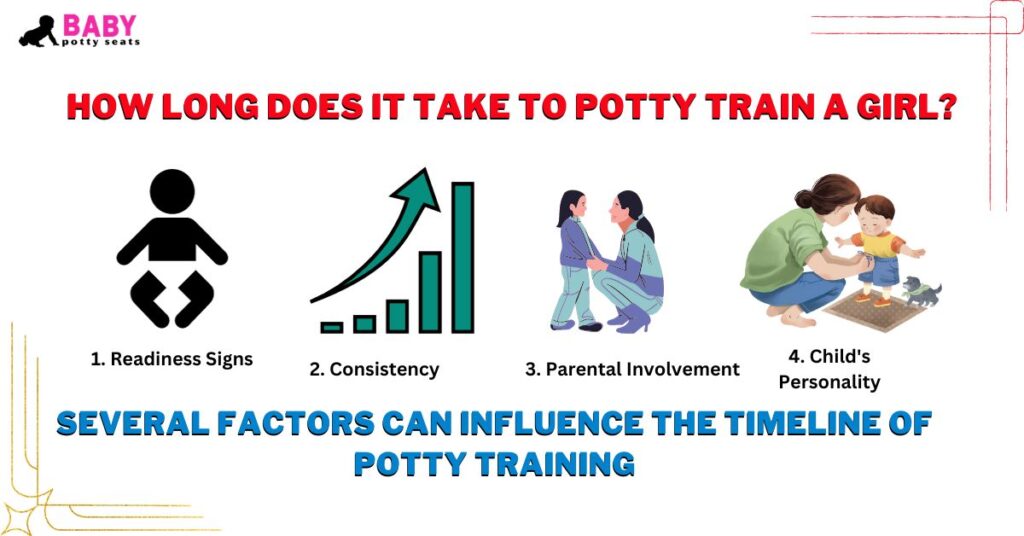
It’s critical to remember that failures and accidents are common learning elements. Potty training is gradual, and kids may experience periods of advancement and regression. It’s crucial to have patience, offer encouragement, and establish a safe space. If there are concerns about delays or difficulties in potty training, consulting with a pediatrician can provide additional guidance and support.
A Comprehensive Guide on Preparing for Potty training a girl
Preparing for potty training with a girl involves creating a supportive and encouraging environment. Here’s a guide to help you get ready:
1. Assess Readiness:
– When a child shows interest in using the bathroom, stays dry for extended periods, or expresses discomfort with their dirty diapers, they are likely ready.
2. Gather Supplies:
– Get the essentials, such as a seat reducer for the regular toilet or a kid-sized potty chair. Consider purchasing waterproof potty training pants and wipes.
3. Introduce the Idea:
– Start a conversation with your child about using the bathroom. Together, read books or watch videos that present the idea of potty training in an entertaining and upbeat manner.
4. Choose a Convenient Time:
-Select when your child’s routine is less likely to be disrupted or drastically altered before beginning potty training. Holidays or weekends could be appropriate for a concentrated effort.
5. Create a Comfortable Environment:
– Ensure the bathroom is child-friendly and comfortable. To make accessing the sink easier, consider decorating with kid-friendly themes or offering a step stool.
6. Let Her Choose:
– Allow your child to select her own Potty or potty training supplies to involve her. An excitement and sense of ownership may result from this.
7. Establish a Routine:
– Establish a regular time for using the bathroom, such as before bed or after meals. Frequency helps your child anticipate when to use the Potty and reinforces the habit.
8. Positive Reinforcement:
– Give your child praise or small rewards when they use the Potty successfully. These are examples of positive reinforcement techniques. Establish a favorable connection with the event.
9. Be Patient and Supportive:
– Understand that potty training is a learning process, and accidents are part of it. Stay patient, avoid adverse reactions to setbacks, and encourage.
10. Celebrate Achievements:
– Celebrate your progress toward potty training milestones and minor victories. When she uses the Potty or stays dry for a long time, celebrate with a special treat.
11. Practice Independence:
– As your child sits on the Potty, removes their pants, and washes their hands, you can help them develop Independence. This fosters confidence.
Remember, every child is unique, and potty training may take time. Stay positive, be adaptable, and celebrate your child’s progress along the way.
How to Potty train a girl? Quick Tips
1. Personalized Potty Space: Create an inviting space with her favorite character decorations.
2. Dress-up Time: Let her choose particular “potty time” clothes for the engagement.
3. Potty Training Doll: Use a potty training doll for demonstration and mimicry.
4. Potty Training Songs: Introduce catchy songs or rhymes for an enjoyable experience.
5. Potty Training Dance: Add a playful touch with a unique “potty training dance.”
6. Storytelling Sessions: Tell her short stories during potty time for a relaxed atmosphere.
7. Scented Soap or Wipes: Use scented soap or wipes for a pleasant handwashing experience.
8. Colored Water Fun: Surprise with water-changing tablets for added excitement.
9. Potty Training Journal: Track potty training progress with a chart or journal using stickers or drawings.
10. Potty Training Tea Party: Create a unique atmosphere with a tea party near the Potty.
11. Use a Potty Training App: Explore interactive apps with games for a tech-savvy approach.
12. Potty Training Treasure Box: Reward success with a treasure box of small toys or stickers.
What is the Fastest way to potty train a girl?
Certainly! Here are three unique approaches that some parents find effective for expediting the girl potty training process:
1. Potty Training Boot Camp:
– Consider a long weekend or other concentrated period to be set aside for a “potty training boot camp.” Ensure your child always wears underwear, set up regular potty breaks, and praise them when they succeed. This focused effort has the potential to quicken learning.
2. Interactive Potty Training Apps:
– Include kid-friendly interactive potty training applications. These applications, which frequently incorporate entertaining games or incentive schemes, add fun to learning and may even accelerate progress through technology.
3. Potty Training Peer Support:
– Plan playdates or other get-togethers with classmates who have finished potty training. Spending time with friends who have mastered the skill may encourage quicker adoption of potty training habits in children, who frequently learn by imitation and observation.
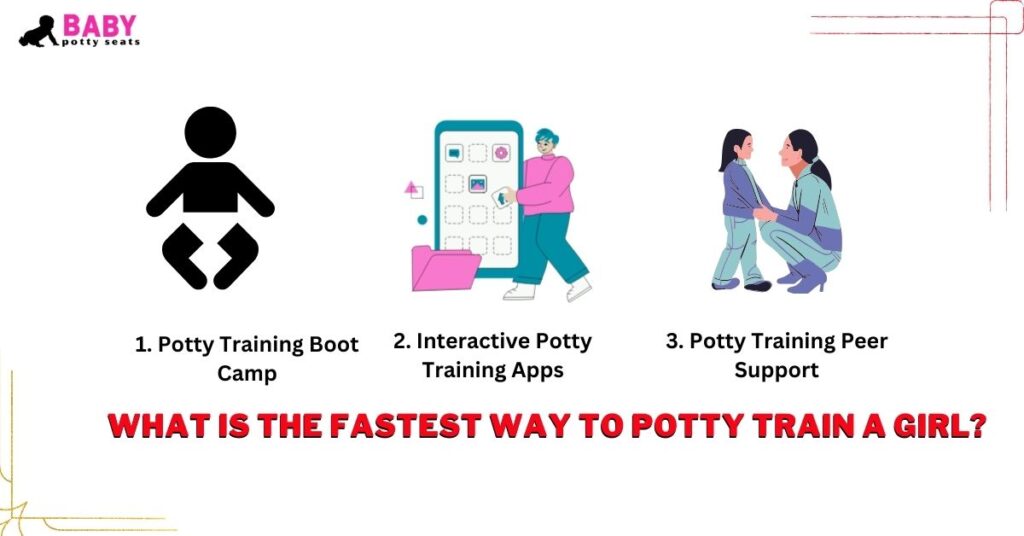
What should you do if potty training is not working for a girl?
If potty training is not progressing as expected for a girl, here are some steps you can consider:
1. Assess Readiness Again:
– Evaluate if she is ready to start potty training again. It might be wise to hold off on trying again for a little longer if she is not demonstrating signs of Readiness.
2. Adjust Timing:
– Think about if this is the right time. Disruptions, stress, or significant life changes can make it difficult for her to concentrate on potty training. Wait for a better time if that’s the case.
3. Modify Approach:
– Examine your current strategy and think about making changes. Since every child is different, what suits one might not suit another. Experiment with different approaches, like changing the potty routine or implementing a new reward system.
4. Stay Positive:
– Continue to be upbeat and supportive. Refrain from showing your child your dissatisfaction or disappointment, which could make them anxious. Errors are expected during the learning process of potty training.
5. Consult the Paediatrician:
– Your child’s paediatrician should be consulted if physical or developmental concerns are present. Eliminate any possible medical conditions that might impede potty training progress.
6. Be Patient:
– It’s essential to be patient. Remember that each child develops at their own pace. It’s critical to maintain composure and offer continuous assistance.
7. Consider Potty Training Regression:
– It could be a brief setback if regression followed initial progress. Determine any alterations or stressors causing the regression and compassionately handle them.
8. Try a Break:
– Take a brief break from potty training if it starts to stress you and your child out. Give it some time, and reintroduce the process when your child appears more willing and prepared.
9. Use Books and Videos:
– Present potty training books or videos created primarily to assist with potty training. A different media may occasionally offer beneficial reinforcement.
10. Model Behaviour:
– Permit your child to see older siblings or peers using the restroom as you continue to model behaviour. Observing others in action can occasionally lead to imitation.
Remember that potty training is a gradual process, and setbacks are normal. Stay flexible, adjust your Approach as needed, and provide a supportive environment for your child’s learning journey. If concerns persist, consulting with a pediatricians can provide additional guidance.
Conclusion
In conclusion, the comprehensive guide to Potty training a girl emphasises the importance of Readiness, positive reinforcement, and individualised approaches. Important cornerstones include identifying each child’s signs of Readiness and establishing a nurturing environment. The handbook emphasizes the importance of introducing the idea at an early age. It has exciting components like enjoyable routines, personalized spaces, and positive associations.
Related Post: The 10 Best Pink And Princess Potty Chair For Toddler



